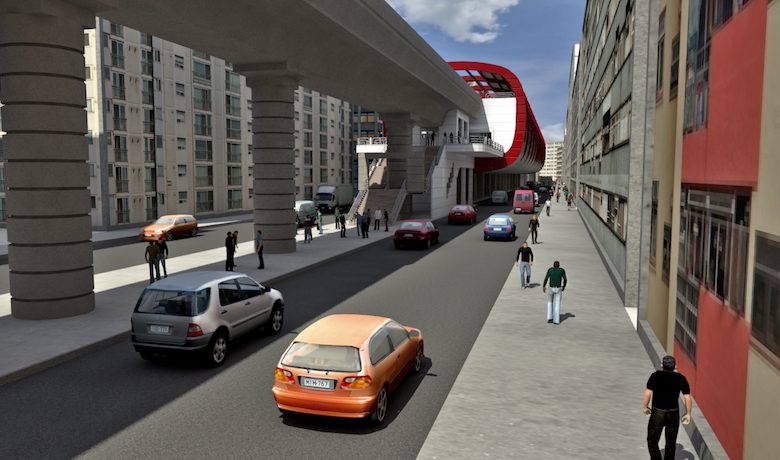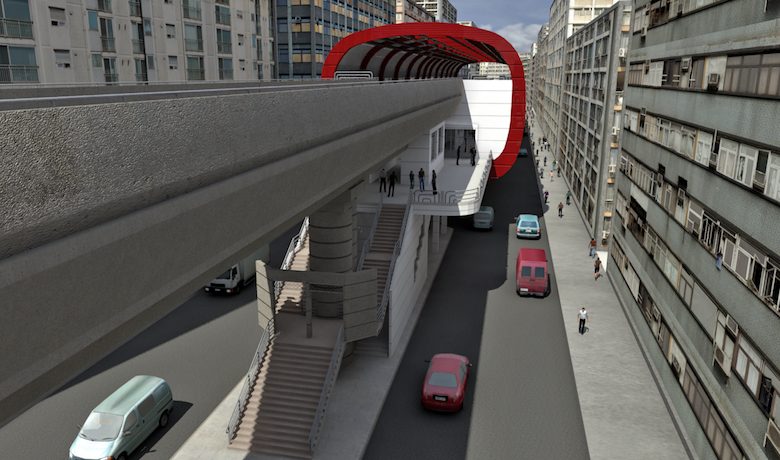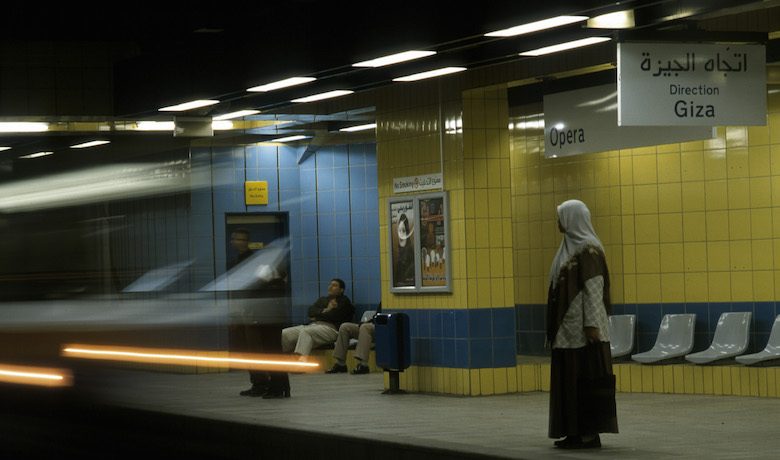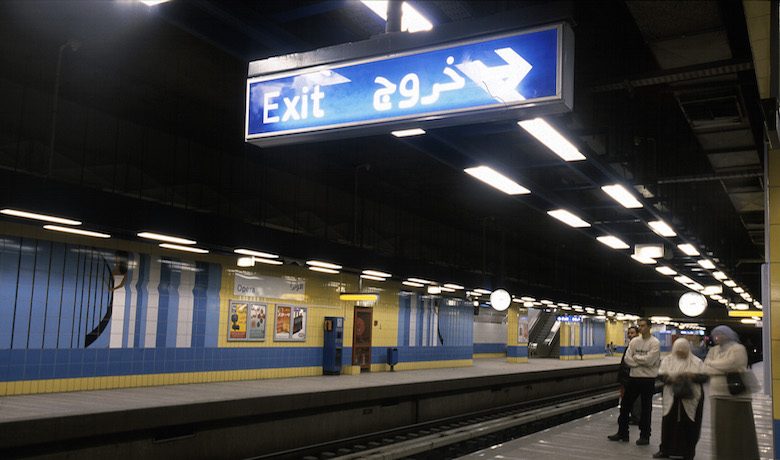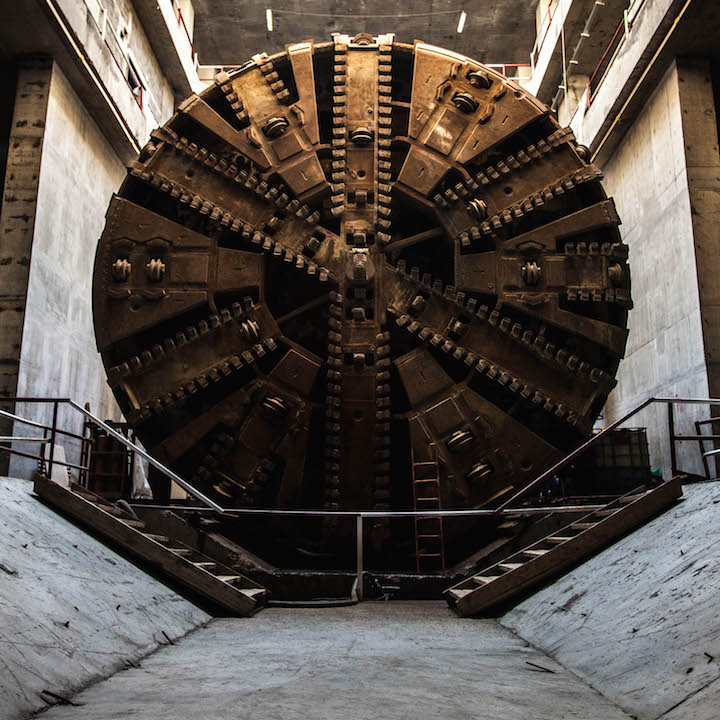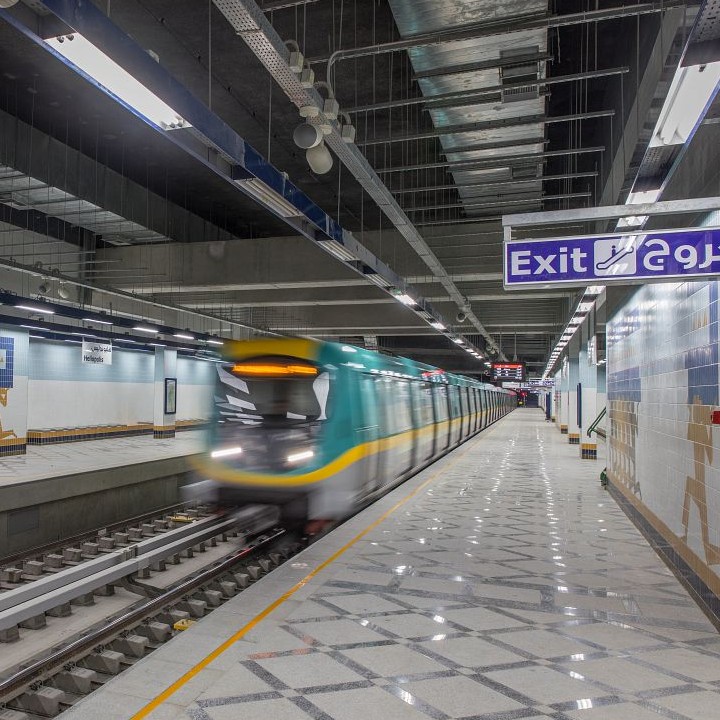TECHNICAL OVERVIEW
When building Line 1, we encountered alluvial soil (fine sand, silt, and clay) at depths ranging from 20 to 60 metres. The proximity of the water table caused significant seasonal variations, ranging from one to two metres. The cut-and-cover method was used for all underground works. The tunnel walls at the Saad Zaghloul, Nasser, and Orabi stations were built using precast panels 0.55 metres thick. At the Sadat and Mubarak transfer stations, we implemented cast-in-place diaphragm walls 80 centimetres in thickness for the main walls and 60 centimetres for auxiliary walls. The Sayeda Zeinab elevated station rests on 300 piles that are 40 centimetres in diameter and 16 metres long.
The Line 2 worksite was located in its entirety in the Nile’s current alluvial plain consisting of Quaternary soil and tertiary alluvium (ranging from 60 to 90 metres in depth). Above-ground, considerable variations were observed due to the movements of the river. Consequently, we opted for a cut-and-cover approach using diaphragm walls, followed by “mole” earthworks. The tunnels were built with two slurry shield TBMs with an interior diameter of 8.35 metres.
As for Line 3, as it is essentially located below the water table in the sandy layers of the alluvial plain, a slurry shield TBM was used to create the tunnel.
The metro line’s five underground stations (Phase 1) were built using the top-and-down method, which consists of earthworks following by construction of the various levels from top to bottom. In order to work in dry conditions, a waterproof, rectangular “box” consisting of diaphragm walls was built beforehand above-ground. For Line 3 (especially Phase 2), VINCI Construction Grands Projets used an innovative approach: a slurry shield TBM equipped with a new system (Variable Density) that allows it to perform in two alternating modes (earth pressure and slurry shield). The Phase 3 contract for Line 3 has been signed in April 2016. The line includes 17.7 km of new line and 15 stations (eight underground, five elevated and two at ground level). The works will require construction of a new tunnel under the Nile.
For the project as a whole, we had to factor in the close proximity of extremely dense vehicle traffic and residential buildings.


